The Mythology of Samhain

 Halloween is celebrated all over the world, but a common misconception is that it is an American tradition, when in fact it originated from the pagan festival Samhain. Samhain, pronounced as sow-win, is a Celtic festival that is celebrated from the 31st October to the 1st November. The Celts believed that during Samhain, the barriers between the world of the living, and the world of the dead thins, allowing for there to be a crossover and communication between the two. The festival began around 2,000 years ago by the Celts, who predominantly resided in Ireland, and other parts of the UK and France.
Halloween is celebrated all over the world, but a common misconception is that it is an American tradition, when in fact it originated from the pagan festival Samhain. Samhain, pronounced as sow-win, is a Celtic festival that is celebrated from the 31st October to the 1st November. The Celts believed that during Samhain, the barriers between the world of the living, and the world of the dead thins, allowing for there to be a crossover and communication between the two. The festival began around 2,000 years ago by the Celts, who predominantly resided in Ireland, and other parts of the UK and France.
The Purpose of Samhain
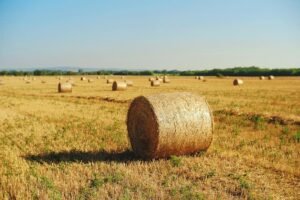 Samhain, which in Irish simply means November, signified the end of the harvest period, and the entrance into winter, or the darker months. It is a celebration of this shift in seasons, about halfway between the autumn equinox and the winter solstice. In early times it was considered a mandatory celebration, a performance for the gods and the local kings, and failure to participate was believed to lead to illness or death. At this time, the cattle were taken from the fields for slaughter, to provide food in the cold months ahead. The crops would also have to be harvested to avoid the disruption of faeries.
Samhain, which in Irish simply means November, signified the end of the harvest period, and the entrance into winter, or the darker months. It is a celebration of this shift in seasons, about halfway between the autumn equinox and the winter solstice. In early times it was considered a mandatory celebration, a performance for the gods and the local kings, and failure to participate was believed to lead to illness or death. At this time, the cattle were taken from the fields for slaughter, to provide food in the cold months ahead. The crops would also have to be harvested to avoid the disruption of faeries.
Samhain Celebrations
 There were many ways to celebrate Samhain. The most common was with fire. Using a wheel that would spark, a bonfire was created and the celebrants would take a flame from it and use it to light the hearths in their own homes. Animals were sacrificed to the gods as well during Samhain. And as with most Irish holidays, drinking excessive amounts of mead and beer was a part of the celebrations too. A feast would be had and that was typically how Samhain was celebrated.
There were many ways to celebrate Samhain. The most common was with fire. Using a wheel that would spark, a bonfire was created and the celebrants would take a flame from it and use it to light the hearths in their own homes. Animals were sacrificed to the gods as well during Samhain. And as with most Irish holidays, drinking excessive amounts of mead and beer was a part of the celebrations too. A feast would be had and that was typically how Samhain was celebrated.
Jack O’Lantern
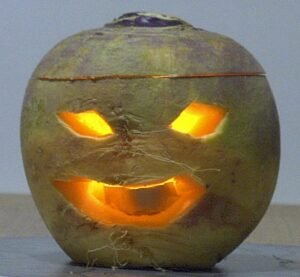 Today people carve pumpkins at Halloween and turn them into lanterns by placing a candle inside. This stems from the legend of Jack O’Lantern which you can learn more about here. Long story short, Jack was an unpleasant blacksmith who kept tricking the Devil. When he died, as punishment, the Devil refused him entry into Hell, giving him a single ember to wander the earth with. Jack put the ember inside a hollowed out turnip to make it a lantern, and ever since, during Samhain, people make their own lanterns. However, most people don’t know that turnips and potatoes were what was originally used.
Today people carve pumpkins at Halloween and turn them into lanterns by placing a candle inside. This stems from the legend of Jack O’Lantern which you can learn more about here. Long story short, Jack was an unpleasant blacksmith who kept tricking the Devil. When he died, as punishment, the Devil refused him entry into Hell, giving him a single ember to wander the earth with. Jack put the ember inside a hollowed out turnip to make it a lantern, and ever since, during Samhain, people make their own lanterns. However, most people don’t know that turnips and potatoes were what was originally used.
Mythology of Samhain
 As the Celts believed that the spirit world would be able to pass over into the living world during Samhain, they prepared as such. They left offerings, for their loved ones who had died, and for other spirits. They worried that fairies would attempt to kidnap them, so they dressed up to ward them off. They also believed in an array of monsters, hence why today when people dress up for Halloween it is often as scary entities like witches and zombies. Trick or treating evolved from this dressing up, the people were tricking the spirits by disguising themselves, while the treats came from the feast they would hold for Samhain.
As the Celts believed that the spirit world would be able to pass over into the living world during Samhain, they prepared as such. They left offerings, for their loved ones who had died, and for other spirits. They worried that fairies would attempt to kidnap them, so they dressed up to ward them off. They also believed in an array of monsters, hence why today when people dress up for Halloween it is often as scary entities like witches and zombies. Trick or treating evolved from this dressing up, the people were tricking the spirits by disguising themselves, while the treats came from the feast they would hold for Samhain.
The Monsters of Samhain
Púca
 The Púca, which also goes by the name Pooka, Plica, Phuca, and Pwwka, is derived from the Irish spelling which means goblin. They are shapeshifters, and can bring good or bad luck. Its most common forms are rabbits, horses, or goats. They were believed to be found mostly in rural areas, where they could run free causing mischief.
The Púca, which also goes by the name Pooka, Plica, Phuca, and Pwwka, is derived from the Irish spelling which means goblin. They are shapeshifters, and can bring good or bad luck. Its most common forms are rabbits, horses, or goats. They were believed to be found mostly in rural areas, where they could run free causing mischief.
Aillén
 This monster is a fire-breathing goblin who originally belonged to the Tuatha Dé Danann tribe. He lures people in by playing faery music which sends them into a deep sleep. Aillén was known to especially terrorise The Hill of Tara, Ireland’s most sacred location, during Samhain, until FionnMac Cumhaill, an Irish hero, defeated him with the knowledge he gained from the Salmon of Knowledge.
This monster is a fire-breathing goblin who originally belonged to the Tuatha Dé Danann tribe. He lures people in by playing faery music which sends them into a deep sleep. Aillén was known to especially terrorise The Hill of Tara, Ireland’s most sacred location, during Samhain, until FionnMac Cumhaill, an Irish hero, defeated him with the knowledge he gained from the Salmon of Knowledge.
The Dullahan
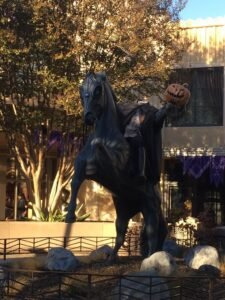 If you’ve ever heard of the headless horseman, The Dullahan is basically the Irish equivalent. The Dullahan rides on a black horse and carries his head in his arms. He is also known as Gan Ceann, which is the Irish for “without a head.” In Irish mythology, if the Dullahan stops riding, someone is about to be slaughtered. The Dullahan simply calls their name, which draws their soul out of their body, and the person drops dead as a result. He appears after festivals, making Samhain a prime time for him to strike.
If you’ve ever heard of the headless horseman, The Dullahan is basically the Irish equivalent. The Dullahan rides on a black horse and carries his head in his arms. He is also known as Gan Ceann, which is the Irish for “without a head.” In Irish mythology, if the Dullahan stops riding, someone is about to be slaughtered. The Dullahan simply calls their name, which draws their soul out of their body, and the person drops dead as a result. He appears after festivals, making Samhain a prime time for him to strike.
The Sluagh
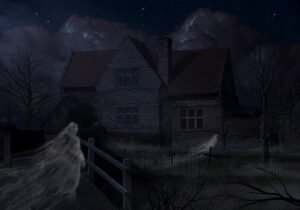 The restless spirits of the dead are called The Sluagh in Irish and Scottish mythology. They’re known for torturing the living, particularly those who are in love. During Samhain, they used living people to do their violent dirty work, murdering cattle and other animals, having no choice but to follow the spirits’ demands.
The restless spirits of the dead are called The Sluagh in Irish and Scottish mythology. They’re known for torturing the living, particularly those who are in love. During Samhain, they used living people to do their violent dirty work, murdering cattle and other animals, having no choice but to follow the spirits’ demands.
The Fomorians
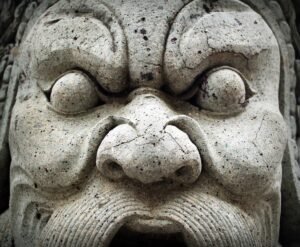 The Fomorians are an Irish supernatural race, taking the form of giants. They come from under the earth or under the sea, and they have the ability to control the forces of nature.
The Fomorians are an Irish supernatural race, taking the form of giants. They come from under the earth or under the sea, and they have the ability to control the forces of nature.
Banshees
 Probably the most well-known monster from Irish mythology, a banshee is a woman who announces the death of someone by letting out a high pitched wail. The Banshee is not necessarily evil, she simply has the ability to predict someone’s imminent death, and seeing her is a bad omen. The name Banshee derives from bean sí, meaning fairy woman.
Probably the most well-known monster from Irish mythology, a banshee is a woman who announces the death of someone by letting out a high pitched wail. The Banshee is not necessarily evil, she simply has the ability to predict someone’s imminent death, and seeing her is a bad omen. The name Banshee derives from bean sí, meaning fairy woman.
Samhain Nowadays
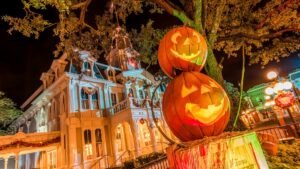 These days Samhain is celebrated globally as Halloween, a holiday where children dress up as monsters and go door to door looking for treats. Pumpkins are carved instead of the traditional turnips, and fireworks and bonfires are had, to replicate the fires from the Samhain days. Halloween has become Americanised, as with many other traditions, but it is nice to know it stems from Irish tradition, and is still fervently celebrated to this day.
These days Samhain is celebrated globally as Halloween, a holiday where children dress up as monsters and go door to door looking for treats. Pumpkins are carved instead of the traditional turnips, and fireworks and bonfires are had, to replicate the fires from the Samhain days. Halloween has become Americanised, as with many other traditions, but it is nice to know it stems from Irish tradition, and is still fervently celebrated to this day.